An unpretentious flower garden in your garden
The article describes the types and characteristics of the most unpretentious flowering perennials, their planting requirements and flowering periods.
| Content:
|
Unpretentious spring flowers
Crocuses
|
A very beautiful bulbous plant from the Iris family belongs to the spring primroses. |
The herbaceous plant consists of a tuberous root, dark green narrow leaves, a cup-shaped flower of six yellow or violet-blue petals and orange stamens. The crocus has no stem.
- Average height – from ten to fifteen centimeters.
- Most species bloom in April, but there are also October varieties. Flowering duration is from fifteen to twenty days.
- Planting is carried out in open sunny areas with breathable soil of neutral acidity.
- The plants have good winter hardiness, but in harsh regions it is advisable to cover flower beds with fallen leaves or spruce branches. Such a shelter will provide additional protection from rodents and birds that feed on crocus tubers.
Crocus is a decorative element in flower beds and flower gardens, a spice, a medicinal plant and a natural dye.
Primrose
|
Primrose or popularly “Easter flower” consists of a shallow fibrous root system, lanceolate elongated leaves with a velvety surface, bright funnel-shaped flowers with a diameter of about five centimeters and fruits - capsules with seeds. |
The colors of the flowers are varied - white-yellow, pink, raspberry-yellow, red, blue-yellow, purple.
- Height - from forty to seventy centimeters.
- Primrose begins to bloom from February 20 to March 20 and continues until July.
- For planting, choose a shady area with acidic or low-alkaline soil. Some species can grow in the sun, among stones, near tall trees.
- The flower can withstand frosts of up to twenty degrees without shelter.
Primrose is a medicinal plant and spice. Infusions, medicinal teas, and soft drinks are prepared on its basis.
Daffodils
|
A fragile and beautiful spring flower in yellow and white shades belongs to the Amaryllis family. |
Narcissists are distinguished by their unpretentiousness and endurance. With virtually no maintenance, they delight with their rapid growth and prolific flowering.
- Depending on the type and variety, the height of the plant can be between ten and twenty or forty and sixty centimeters. The diameter of the flower is from two and a half to ten centimeters.
- Flowering time is from April to June.
- Planting is carried out in semi-shaded areas with loose and nutritious soil of an alkaline reaction, with good passage of air and moisture.
- In snowless winters, plants must be covered with a thick layer of fallen leaves (about 15 centimeters) or sawdust.
Flowers are known for their medicinal properties and are used not only in our country, but also in Greece, China, and Japan.
Don't forget to read:
Planting and caring for daffodils in the open ground and at home ⇒
Tulips
|
Delicate, bright, attractive and unpretentious flowers can be found in every personal plot, flower garden and flower bed. |
The main advantage of tulips is their many varieties, variety of colors when blooming, fragrant aroma and freshness. To this we can add their hardiness, ease of reproduction and ease of care.
- Height - from ten to ninety centimeters.
- Flowers from April to June.
- For planting, a flat, open area with good sunlight, loose nutritious soil, rich in humus, and a neutral or slightly alkaline reaction is required.
- In regions with strong and snowless winters, flower beds are covered with a mulch layer eight to fifteen centimeters thick.
In the huge family of tulips there are about a hundred species and about two thousand varieties and hybrids.
Garden lungwort
|
Lungwort is a beautiful herbaceous perennial from the Borachnikov family. |
The plant consists of lanceolate leaves with an unusual color: on a light or dark green surface there are spots of various shapes of a silvery hue and slight pubescence. A feature of the flowers is a gradual change in their color - from pink, blue to violet, lilac, blue, red.
- The height depends on the variety and ranges from ten to fifty centimeters.
- It blooms in April – May for three to four weeks.
- Planting is done in shade or partial shade, on loamy or sandy loamy areas with deep groundwater, with slightly acidic or alkaline soil.
- The perennial overwinters under a layer of peat or fallen leaves.
The juice, roots, leaves and flowers of lungwort are used as medicinal raw materials.
Daisies
|
Unpretentious beautiful perennials can be grown in the garden and as a houseplant. |
Among the many varieties and varieties, there are simple, double, needle-shaped flowers of a wide variety of colors. Up to thirty peduncles are formed on one bush.
- The height of the bush is from ten to thirty centimeters. The diameter of the inflorescence is from one and a half to six centimeters.
- Flowering of daisies begins in April - May and continues until late autumn. In the first half of this period, plants bloom more luxuriantly and abundantly.
- For abundant and long flowering, it is recommended to choose open sunny areas with light loams and deep groundwater when planting.
- Daisy is a winter-hardy crop, but in regions with severe winters and frosts of more than thirty degrees, the plants will need shelter in the form of hilling with earth, as well as spruce branches or fallen leaves.
Collections of daisy flowers are sold in any pharmacy and are used to treat many diseases. Plants are also in demand in the cosmetics industry and in cooking.
Pushkinia
|
A beautifully flowering perennial from the Asparagus family, it is highly decorative and winter-hardy. |
The spectacular Pushkinia consists of slightly elongated corms, narrow fleshy bright green leaves with a smooth surface, racemose inflorescences with bell-shaped fragrant blue-white flowers and fruit-pods with seeds. Up to thirty buds are collected in one inflorescence.
- The average height is about twenty centimeters, leaves and peduncles are up to fifteen centimeters, flower diameter is two centimeters.
- The flowering period begins in March - April and lasts two to three weeks.
- Crops are planted in partial shade or in open sun, on fertile, loose and well-drained soils.
- Winter hardiness is high, shelter is not required even at thirty-degree frosts.
The culture is popular among landscape designers and is often used in rock gardens, alpine hills, mixborders, and as a potted crop.
Unpretentious perennial flowers blooming in summer
Phloxes
|
Unpretentious phloxes have a well-developed root system with long roots, creeping or erect stems, leaves of different shapes (depending on the variety), inflorescences of funnel-shaped flowers in delicate or bright shades. |
Beautifully flowering fragrant plants belong to the Sinyukhov family.
- Depending on the type, the height of the plant is from twenty centimeters to one and a half meters. The diameter of the flower is from two to four centimeters.
- Each variety blooms at a different time - early spring, summer or early autumn.
- Phlox grows in partial shade or full sun. They feel best on light loams, but can take root in any soil.
- In regions with heavy snowfalls and thick snow cover, flowers do not require shelter even at thirty-five degrees below zero. Without snow, crops will freeze at ten to fifteen degrees below zero.
Phloxes grow quickly, so they must be divided every 4 to 5 years and replanted. Once a year it is necessary to add soil to the root part, since the roots are close to the surface and become very overheated in the heat.
Lupins
|
Lupines are easy to care for and grow quickly. |
The drought-resistant plant has a taproot system, herbaceous or woody stems, complex-shaped leaf plates of a herbaceous hue, and spike-shaped inflorescences in pink, purple, white, yellow, lilac, and lilac tones.
- The height of flowering grass is from one to one and a half meters.
- Active flowering occurs in June – July. In a favorable climate, it can be observed until late autumn.
- For planting, choose open areas with good lighting, without stagnant water and with moderate humidity.Suitable areas are light loams, sandy and podzolic soils.
- Winter hardiness allows you to endure harsh winters under a layer of snow without additional shelter. During snowless periods, plants are covered with earth and sprinkled with leaves.
Lupine is in demand in the food industry, cosmetology and pharmacology, it is used for medicinal and agricultural purposes, it is highly decorative, and is also an excellent food for fish, an excellent green manure and even a raw material for the production of plastics.
Loosestrife
|
Rainbow grass, purple bouquet, weeping grass - all this is a spectacular and bright, unpretentious and hardy loosestrife. |
Its pink-violet spike-shaped inflorescences with a pleasant honey aroma stand out against the background of greenery.
- The average height is from eighty to one hundred and fifty centimeters.
- Blooms throughout the summer months.
- Unpretentious perennials grow fully in sunny and shady areas, but with reliable protection from drafts and strong gusts of wind. The soil should be fertile, well-moistened and light. A nearby pond or stream is welcome.
- High winter hardiness allows the merlin to overwinter in the middle zone under snow in the most severe frosts; without a snow cover, a layer of peat and leaves will be required.
Perennial plants are used in folk and official medicine. They are also honey-bearing crops. The root part and flowers are necessary to obtain food coloring.
Peonies
|
Luxurious bulbous perennials belong to the Peony family and attract the eye with lush and very fragrant flowers, as well as bright and lush greenery. |
Perennial crops, with proper care, can provide their beauty for several decades.
- Height - from one to two meters. The diameter of the inflorescence is from fifteen to twenty-five centimeters.
- The flowering time of each variety is different and ranges from one to three weeks.
- For planting, choose a place with abundant sunlight, good air circulation, and away from tall crops. The soil must be moisture-absorbing, drained, and slightly alkaline.
- Among the variety of varieties, there are peonies that are resistant to different climatic conditions. Some species and varieties can grow fully in the harshest regions of Siberia and the Far East.
In China, India and Indiana, the peony is considered a state symbol. It is also one of the most prolific plants on Earth, capable of forming up to hundreds of buds on one bush.
Don't forget to read:
The best varieties of herbaceous peonies photos and descriptions ⇒
Irises
|
Easy to care for, irises or cockerels are found on all continents. They can grow in flower beds, flower beds, fields, meadows, and even in an apartment on a windowsill. |
The leaves of the crops are rich green, bright, hard, and look like swords. The flowers are very fragrant, with velvety petals and ruffled edges. In color they are white and purple, yellow and blue, pinkish and almost burgundy. There are two and three-color varieties.
- The height of the bush is from thirty centimeters to one meter.
- The flowering period is from May to July.
- A favorable place for planting is bright sunlight, high humidity, fertile, loose soil with a slightly acidic or neutral reaction.
- The high winter hardiness of irises allows them to withstand the most severe frosts (more than 35 - 40 degrees) without shelter.
Flowers are in demand in the perfume industry, and the aroma of iris oil is useful for stress and nervous disorders, for relieving fatigue and tension.
Daylilies
|
Herbaceous perennials from the Asphodelaceae family are distinguished by an incredible variety of varieties and hybrids - about thirty thousand in total. They all differ in size and shape, aromas and colors, flowering times and growing requirements. |
- The height of the stem is from twenty to one hundred centimeters, the diameter of the flower is from five to twenty centimeters.
- The flowering period lasts about two to three weeks, but each flower blooms for only one day.
- The planting location depends on the choice of variety. Some of them love open sunny areas, others prefer openwork shade or partial shade. You can use moderately loose loams with good drainage, fed with organic matter, neutral or slightly acidic.
- Withstands frosts up to forty degrees.
The unpretentious cultivated daylily can grow in all corners of the Earth except Antarctica.
Astilbe
|
Beautiful flowers from the Saxifraga family consist of a woody root part, erect stems, serrated dark green leaves, and paniculate inflorescences of red, purple or pink hue. |
Herbaceous perennials are highly decorative, hardy and undemanding in care.
- The height can reach two meters. The length of the inflorescence is from eight to sixty centimeters.
- Flowering lasts from June to September.
- When choosing a site, it is worth considering that astilbe reacts negatively to direct sunlight and dense shade.The soil should be chosen moist, but without stagnant water. For looseness, peat, sand and organic matter are added to the soil.
- In the presence of snow, crops do not require shelter even at frosts below thirty-five degrees.
In many countries, the leaves are used as a medicinal raw material, and in China and Japan they are used to prepare seasoning for meat.
Don't forget to read:
Dicentra
|
Broken Heart is the name given to an unpretentious perennial with romantic heart-shaped flowers with an “arrow” in the center. |
A crop from the Poppy family has a long fleshy rhizome, straight or branched stems, green leaf blades with a bluish tint, light pink or red flowers.
- The average height is about thirty-five centimeters, with tall species up to one meter.
- Some varieties bloom twice a season - in May - June and in August - September. Flowering duration is from four to six weeks.
- Dicentra is planted in a sunny place with lightly drained soil, pre-fed with organic matter.
- Plants can withstand frosts up to twenty-five degrees; in more severe areas, they use peat cover up to eight centimeters thick.
The sap of a beautiful and unusual-looking plant is poisonous, so when the plant or its individual parts come into contact with the skin, allergic manifestations in the form of a rash, nervous disorders, and even poisoning are possible.
Turkish clove
|
A beautifully flowering plant from the Clove family, it is distinguished by its spectacular spherical inflorescences with petals of various shades and a pleasant, delicate aroma with spicy notes. It is unpretentious in care, reproduces easily, and is a honey plant. |
- The height of the bush is from fifteen to sixty centimeters, the diameter of the inflorescences is about fifteen centimeters.
- The plants are characterized by a long flowering period, which lasts one and a half months and occurs from June to August.
- Cloves grow well in fertile, well-drained and loose soil, with plenty of organic fertilizer. During midday hours, the area should not be exposed to aggressive sunlight.
- In temperate and southern regions it winters without shelter, in northern latitudes it will require additional protection from a layer of peat, leaves and spruce branches.
In the course of long breeding work, an unusual variety of carnation was developed, which changes its color three times a day. In the morning it is white, during the day it becomes pink, and in the evening it turns dark red.
Don't forget to read:
Mallow
|
The culture from the Malvaceae family consists of a tall straight stem, rounded heart-shaped petiolate leaves and flowers of different colors and shades. Plants are highly decorative, easy to care for, and have strong immunity. |
- Depending on the variety, the height of the mallow ranges from thirty to one hundred and twenty centimeters, and sometimes up to two meters. The diameter of the bell-shaped flowers is about eight to twelve centimeters.
- Active flowering of mallow in white, pink, purple, red, yellow and almost black colors continues from June to August.
- An unpretentious crop can grow in any area, but it will show all its decorative value in a fertile sunny place without stagnant water and strong wind.
- Mallow does not withstand frosts below twenty degrees.
Cultures have many beneficial properties and are used in official and folk medicine, cooking, and cosmetology.
Don't forget to read:
Delphinium
|
It is popularly called the “king of blue flowers”, thanks to its spectacular blue and blue inflorescences. Lilac, purple, white and pink delphiniums are no less attractive. |
Despite such beauty, all parts of the perennial are poisonous and can be dangerous as a honey plant when grown near an apiary.
- Depending on the type and variety, the height of the plants ranges from thirty centimeters to two meters.
- The flowering period lasts from June to August. In southern climates, re-blooming is possible.
- Tall crops must be planted in an area protected from the wind, the rest - on small hills, where there is no threat of damping off during thaws. The soil is required to be fertile, breathable, and with moderate moisture.
- Recommended for southern and northern latitudes, it can withstand frosts up to forty degrees.
The poisonous plant is very useful and in demand in the manufacture of preparations to combat garden and garden pests.
Don't forget to read:
Aquilegia
|
The beautifully flowering perennial has a branched rhizome, a dense rosette of dark green leaves with a waxy surface, stem leaf plates on smooth shoots, drooping flowers with petals and bracts of a contrasting shade. |
The color of the inflorescences can be pink and red, crimson and purple, blue and lilac, white and yellow.
- The flowering bush grows up to fifty to eighty centimeters in height.
- Active flowering begins in early June. Each flower blooms for no more than a week.
- For planting, choose a semi-shaded area with a minimum amount of direct sunlight during the day. Flowers love slight coolness and high humidity.
- The winter hardiness of plants depends on their age: young plants are more vulnerable in winter, adults become cold-resistant and do not need shelter.
In the USA, aquilegia is not used for making bouquets, since the plants symbolize female infidelity and can offend the recipient of the flower gift.
Don't forget to read:
Nivyanik (garden chamomile)
|
Unpretentious garden daisies consist of straight, slightly branched stems, oblong bright green leaves with a serrated edge, and snow-white flowers with a yellow center. Perennials have healing properties and are used in cooking and cosmetology. |
- The bush grows in height from thirty centimeters to one meter. The diameter of the inflorescence-basket is from six to twelve centimeters.
- The flowering of thistle can be observed twice a season - at the end of May and in the second half of August.
- Crops require areas with bright sunlight, fertile, moist soil that is non-acidic in composition and drained.
- Winter hardiness is high, plants do not need shelter.
Among the people, the nivyanik has many other names - whitehead, vorozhka, popovnik, bachelorette, sunflower, squirrel-grass, daughter-in-law.
Rudbeckia
|
A beautifully flowering perennial from the Asteraceae family, it has simple or branched shoots with a rigidly pubescent surface, oval or ovoid leaves, basket-shaped inflorescences with long yellow petals around the circumference and dark brown short ones in the middle. |
The peculiarity of the culture is its diversity of species and varieties, ease of care, and abundant flowering.
- The diameter of the basket is from five to fifteen centimeters. The height of the plant is from fifty centimeters to two meters.
- Flowering bushes delight the eyes of others from early July to September.
- In one place, plants can bloom profusely for about eight years in a row, so it is worth choosing a suitable site when planting. A light or semi-shade place with light loamy or sandy loam soils of slightly acidic or neutral reaction is required.
- In temperate and southern latitudes, crops overwinter without shelter; in northern latitudes (with frosts below thirty degrees) they require a thick layer of sawdust, mown grass or spruce branches to cover them.
The flowers, stems, leaves and roots of Rudbeckia purpurea and Rudbeckia dissecta are widely used in folk medicine to treat a large number of ailments.
Low-maintenance autumn perennials
Chrysanthemums
|
Persistent and hardy perennials are distinguished not only by their high decorative value and ease of care, but also by their diversity of species and varieties. |
Crops from the Asteraceae family captivate with their large and small, fluffy and needle-shaped inflorescences of different shades. They are frost-resistant, not afraid of diseases and pests, and easily adapt to different climatic conditions.
- The height of the flower is from twenty-five to one hundred and twenty centimeters, the length of the leaf plate is up to seven to fifteen centimeters, the diameter of the inflorescences is up to seventeen centimeters.
- Depending on the variety, flowering occurs from August to December.
- The site should have a lot of light and warmth, protection from gusts of wind and a drainage layer from stagnant water.
- Some varieties grow well even in Siberia and the Urals and winter well even in the most severe frosts.
In many countries, the chrysanthemum is a certain symbol and subject of veneration. In China it means prosperity and tranquility, in Japan it means power and dignity, in the USA it means friendship, loyalty and devotion, in the East it means longevity.
Don't forget to read:
Varieties of multiflora chrysanthemums (spherical) with photos and descriptions ⇒
Asters
|
The most unpretentious to grow and care for, varied in color, beautiful perennials from the Asteraceae family are distinguished by many varieties of various shades and shapes. |
This is a culture with a powerful rhizome and a strong stem, simple leaves and inflorescences-baskets, it can be low or tall, with simple or double flowers, of different flowering periods. Asters grow in open flowerbeds and containers, in flower beds and indoors as a houseplant.
- Height - from ten centimeters to one and a half meters.
- Flowering begins in late summer and continues until frost.
- For planting, choose a sunny place without strong winds, with light sandy loam or loamy drained soil.
- Plants do not need winter shelter. During snowless winters in the northern regions, flower beds are covered with sawdust or leaves.
Cut flowers retain their freshness and beauty in a container with water for fifteen to twenty days.
goldenrod
|
Drought and frost-resistant goldenrod is often called autumn mimosa for its graceful bright yellow inflorescences and original aroma. |
This is a medicinal plant, a honey plant and a pleasant element in landscape design. The crops are distinguished by their undemandingness to soil and weather, light and temperature parameters.
- The height of the bush is from thirty centimeters to two meters.
- Blooms in August – September.
- Plants are planted in light nutrient soil in the sun or partial shade.
- Frost resistance is high, shelter is not required.
Ornamental perennials, due to the large number of seeds, can cause great harm to neighboring crops and the environment as a whole, displacing them from the territory. The germination rate of goldenrod seeds is quite high, and the survival rate and endurance of plants is enormous. Therefore, along with the disappearing neighboring field crops, insects and birds are disappearing, for which there will be insufficient food supply.
Colchicum
|
An unpretentious bulbous perennial from the Colchicum family is very beautiful, undemanding to growing conditions, easily propagated, but is a very poisonous plant. |
Official medicine uses drugs based on it to treat some diseases, but using plants independently for medicinal purposes is very dangerous due to its high toxicity.
- The height of the flower is about twenty centimeters.
- Single or double inflorescences of pink, lilac, purple, white, yellow or striped flowers appear in early autumn and bloom for ten to twenty days.
- For planting, choose slightly shaded or open areas with light, loose and nutritious soil, without stagnant moisture.
- High frost resistance allows plants in temperate climates to tolerate even severe frosts without snow cover and additional shelter.
Flowers can be grown not only in open ground, but also in containers and baskets. This method of cultivation allows you to enjoy beautiful flowering on the terrace or in the kitchen even in late autumn and early winter.
Don't forget to read:
Gaura
|
An erect, branched perennial is a wide spreading bush that consists of a taproot, hard brown shoots, small and long leaf plates of dark green color and spike-shaped inflorescences of white or pink flowers. |
The peculiarity of the culture is resistance to diseases and pests, high decorativeness and long-lasting, and sometimes repeated flowering.
- An adult bush grows up to fifty to one hundred centimeters in height.
- Flowering continues from early July to late October. Begins to bloom from the year of planting.
- It is recommended to plant in open areas with maximum sunlight. The soil should be sandy loam, fertile, with sufficient nutrients.
- Crops can withstand frosts up to twenty-three degrees. At lower temperatures, plants need to be hilled up and covered with leaves.
Easy-to-care flowers require infrequent watering and loosening, as well as weeding or mulching.
Don't forget to read:
Hybrid sedums
|
Perennial unpretentious plants from the Crassulaceae family are used to decorate rooms and garden plots.Their fleshy leaves and stems are able to accumulate moisture reserves and retain it for some time in order to more easily endure dry and hot periods. |
The crops consist of creeping branching stems, dark green leaves up to three centimeters long and star-shaped yellowish flowers collected in umbellate inflorescences.
- Height is about twelve to fifteen centimeters.
- The flowering period begins in July and continues until the end of August.
- Prefers light areas; there will be no flowering in dense shade. The soil needs to be fertile, loose, sandy loam is suitable, and acidic in reaction.
- Most species and varieties do not need shelter in winter. Recommended for cultivation in Siberia and the Urals.
Hybrid sedums are planted in various varieties of alpine hills, as well as near rocky surfaces, concrete slabs or hatches for the purpose of camouflage and landscaping.
Ground cover unpretentious perennials
Phlox subulate
|
The creeping or carpet species, as it is popularly called, likes to grow in the shade of tall bushes, on rocky areas and sandy hills. |
Its recumbent stems are densely covered with tough leaves about two centimeters long. On the peduncles there are funnel-shaped flowers in white and pink shades with a diameter of up to twenty-five millimeters, collected in inflorescences.
- The average height of the crop is from ten to twenty centimeters.
- The plants bloom twice – in May–June and in August–September. Both times the flowering is abundant, completely covering the foliage.
- For full development, phlox requires sunny areas with dry sandy or medium loamy soil, loose in structure, breathable and neutral in reaction.
- It is recommended to mulch the root collar of plants with peat, but in general, phlox does not require shelter.
Ground cover phloxes are easy to care for, they are not afraid of drought, adapt to any soil and do not react to sudden changes in weather.
Yaskolka
|
A perennial crop from the Carnation family, it consists of many snow-white flowers that resemble a lush, airy carpet. |
The leaves and stems of the plant are painted in a silver-green hue and this makes them stand out sharply against the background of other plants. The root system is fibrous, superficial, but very strong.
- The height of the shoots is about thirty centimeters, the diameter of the flower is about two centimeters.
- The first flowering occurs in early May, the second in early July.
- Plants need well-drained, loose soil in a light, semi-shade area, protected from strong winds.
- Frost resistance is moderate; in snowless winters, crops are covered with lutrasil or spunbond.
All parts of the plant are used in folk medicine to prepare infusions and decoctions that help overcome various ailments and restore health.
Clove - herbal
|
Beautifully flowering perennials are a bush with a large number of stems up to forty centimeters long, thin leaves-shoots no more than a millimeter wide and inflorescences of pink and purple shades. |
The unpretentious crop is used in areas as a border plant; it is planted in rock gardens and rocky gardens.
- The average height is from twenty to forty centimeters.
- Abundant flowering can be observed for a month and a half, starting in mid-June.
- The planting area should be open and bright. Carnations should not be disturbed by tall neighboring crops.The soil chosen is dry, neutral or slightly acidic.
- Frost resistance is high, shelter is not needed.
Clove - a herb - is a honey plant, it is a medicinal and ornamental crop. Decoctions, extracts, infusions, and teas are prepared on its basis. Cloves are no less popular in veterinary medicine and cosmetology.
Periwinkle
|
An unpretentious mysterious flower from the Kutrov family is popular among flower growers, as it is highly decorative and hardy. It can adapt to any conditions and remains attractive even after flowering has ended. |
Evergreens consist of leathery, dark green leaf blades with a shiny surface and single flowers of blue, light blue, lilac or violet.
- The height of the peduncles is about twenty centimeters, the diameter of the flower is two and a half centimeters.
- The flowering period lasts for twenty to thirty days, beginning in May – June.
- Periwinkle prefers to grow in shade or partial shade on loose, nutritious soil, slightly acidic or neutral, with good drainage. Experienced gardeners recommend choosing areas for planting in the tree trunks of fruit trees (apple, pear, peach, cherry).
- Without shelter, many plants can withstand the climatic conditions of the Middle Zone; heat-loving varieties are covered with mulch about fifteen centimeters thick.
Medicines are made from periwinkle (for example, Vinpocetine), it is used in traditional medicine recipes, and especially superstitious people consider it a source of magical power that protects against diseases and the evil eye.
Don't forget to read:
Creeping tenacious
|
A real “carpet” appears in the area where the creeping tenacious grows. It does not give any chance to weeds and becomes the main decoration in this area. |
A hardy and unpretentious perennial from the Yamnotaceae family, it consists of a short but strong rhizome, creeping shoots with small oval leaves and peduncles with pale blue or blue spike-shaped inflorescences.
- Height - from ten centimeters to half a meter.
- Flowering begins in May - June and continues for three - three and a half weeks.
- For planting, you can choose a site in any corner of the garden or on your personal property. There are also no requirements for soil; any soil is suitable.
- It tolerates the most severe frosts under snow cover.
The culture is highly decorative, is a medicinal plant and is used for culinary purposes. Disadvantage: it grows quickly throughout the area and depresses nearby plants.
Purslane
|
An herbaceous perennial from the Portulacaceae family consists of a branched superficial root system, flexible creeping shoots, succulent fleshy leaves up to five centimeters long in green or reddish hue and bright flowers (in red, white, yellow, pink, purple) with a diameter of three to six centimeters. |
- Plant height is from ten to thirty centimeters.
- Purslane begins to bloom in mid-June and continues until the first autumn frosts. Each flower blooms for one day, after which it fades.
- For planting, you should choose sunny areas, without a hint of shadow, with sandy or rocky soil of a neutral reaction.
- Heat-loving purslane reacts negatively to cold and frost.It is not able to survive our cold winters, but this flower has such abundant self-seeding that it is enough to plant it once and then every year you will admire its bright flowers.
Interestingly, short-term autumn frosts do not interfere with the flowering of purslane. This is why people call it “hellebore”.
There are a lot of unpretentious perennials, but every gardener will be able to choose the most suitable specimen for himself, which will become the best decoration of your garden.

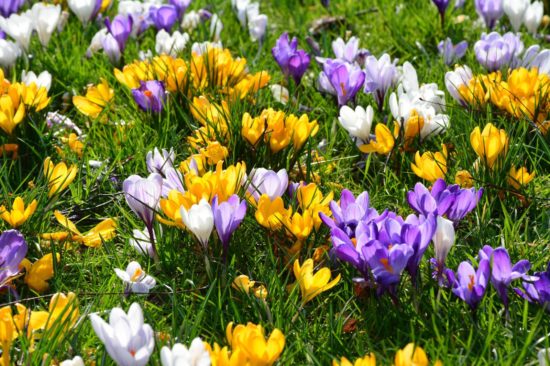


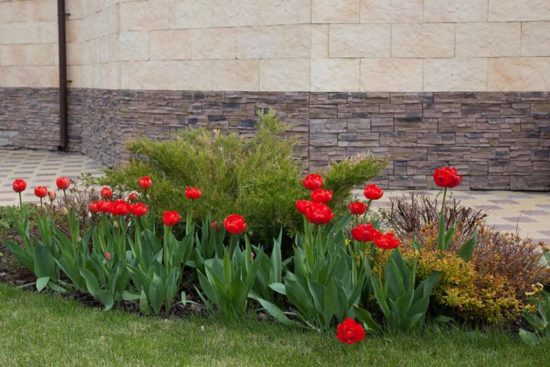
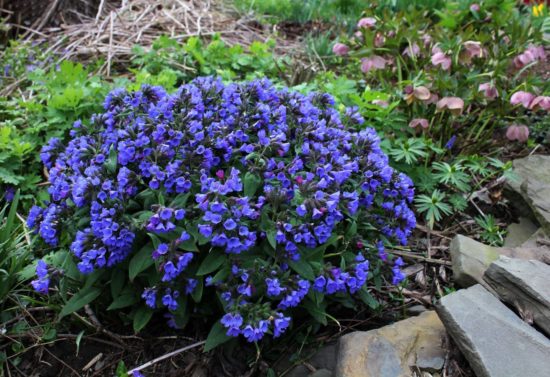
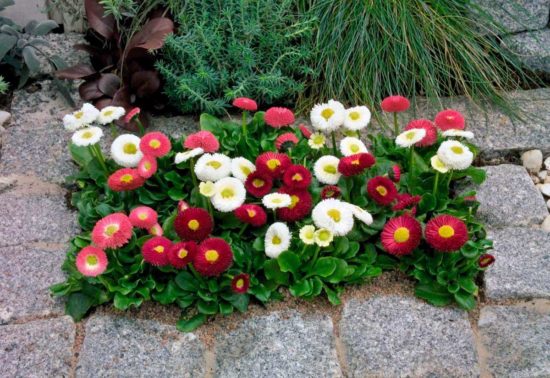
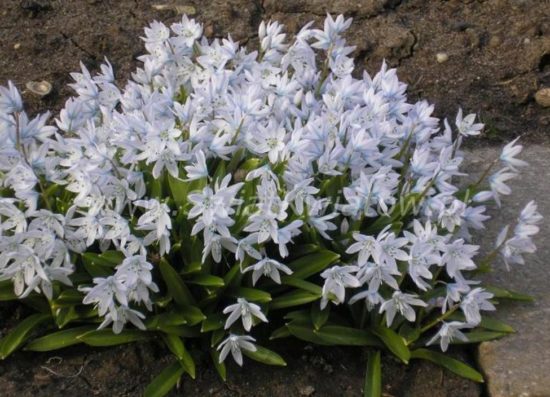
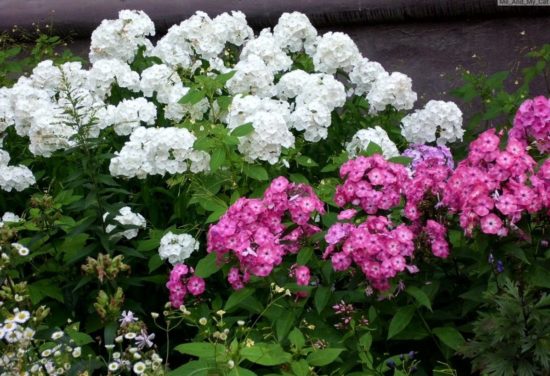
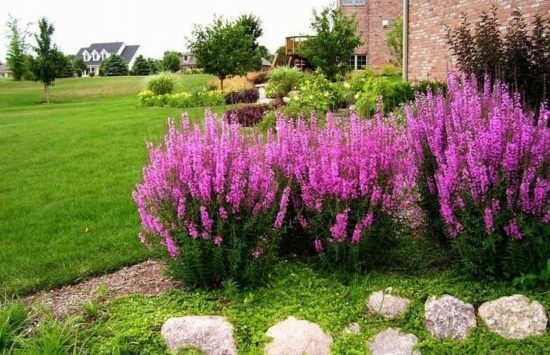
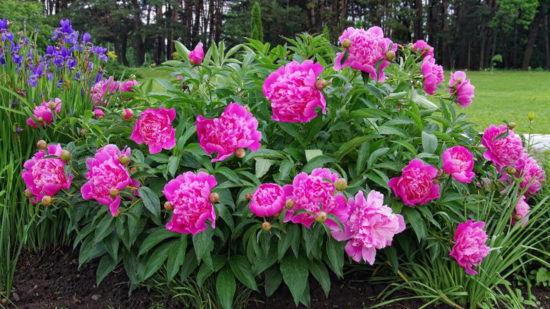
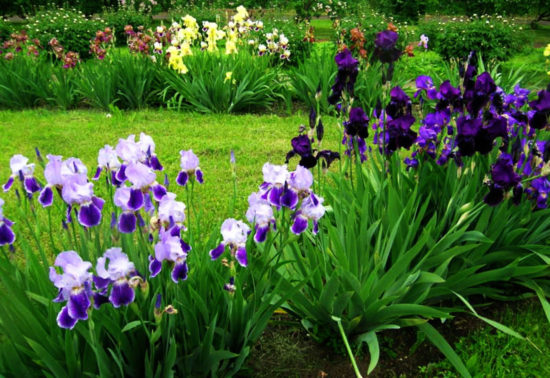
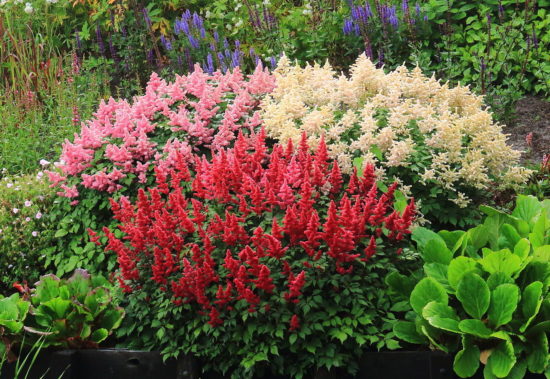
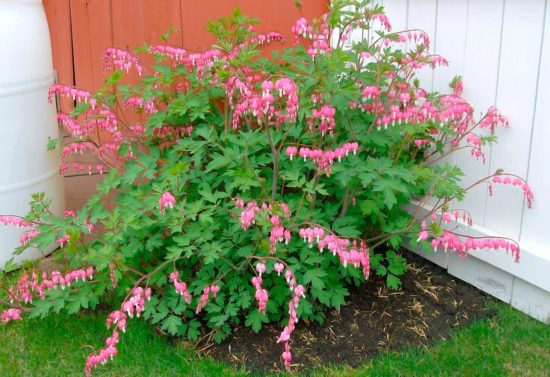
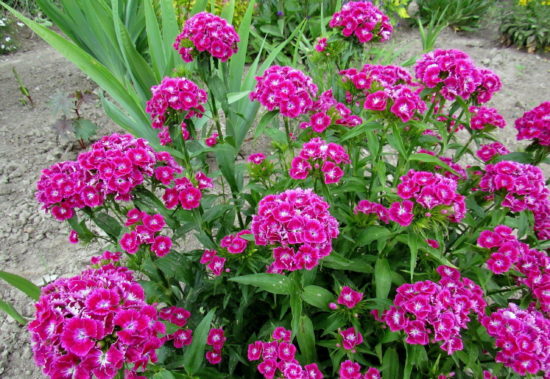
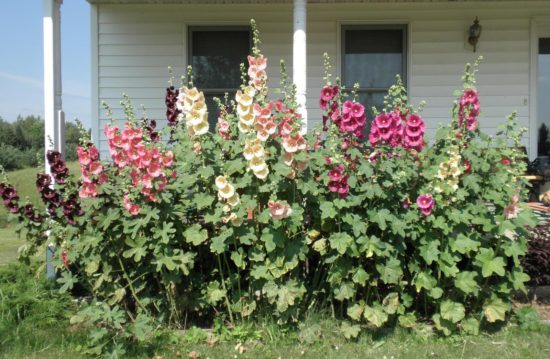
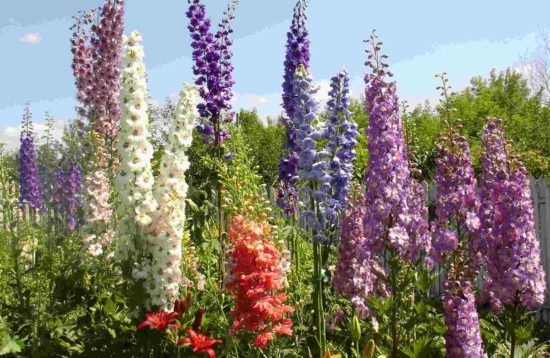

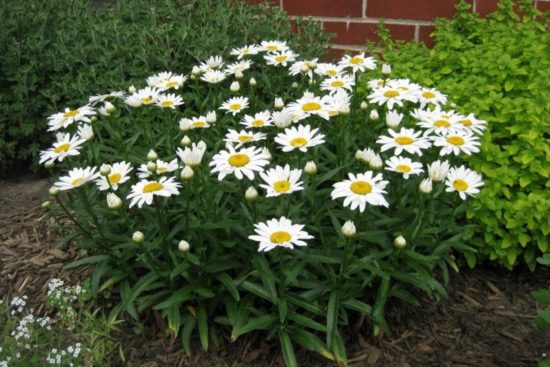
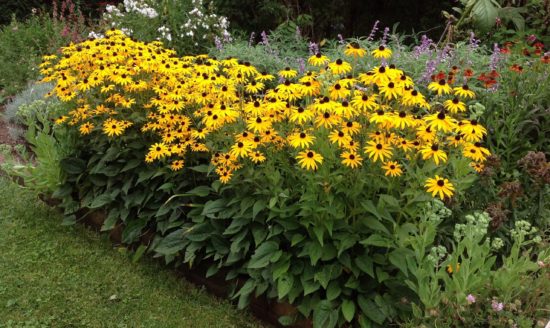
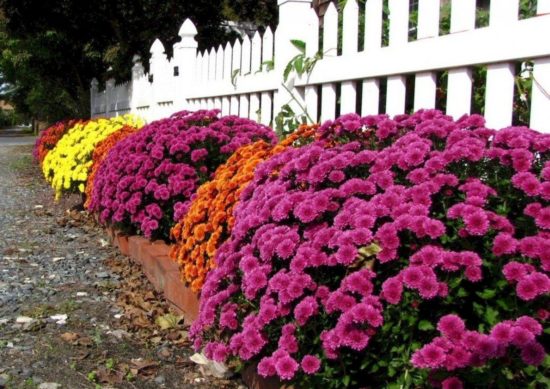
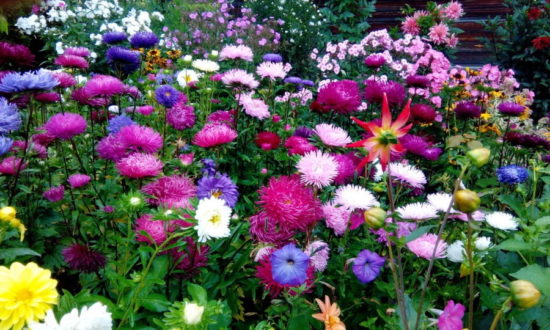


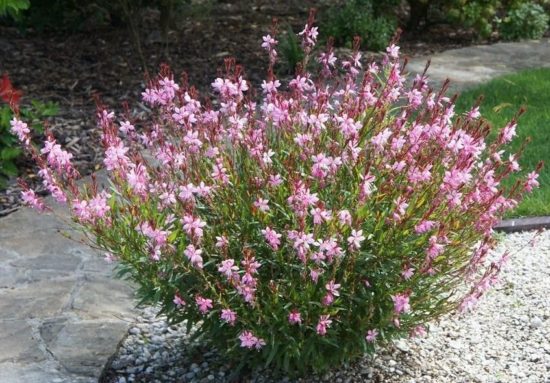
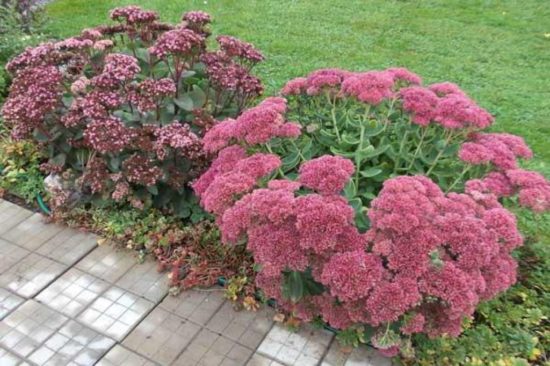
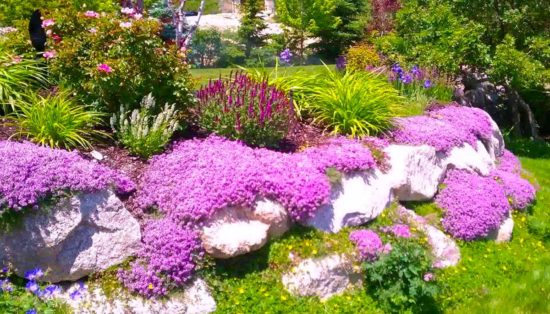
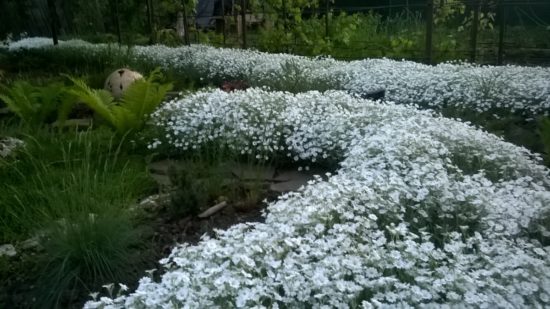

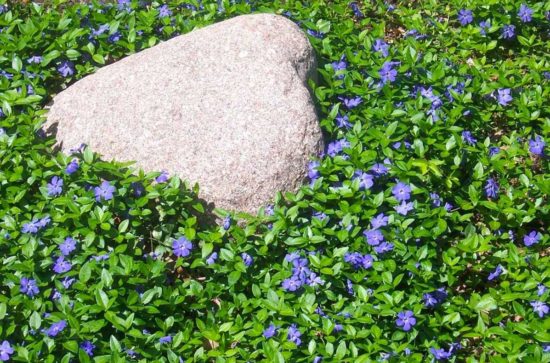
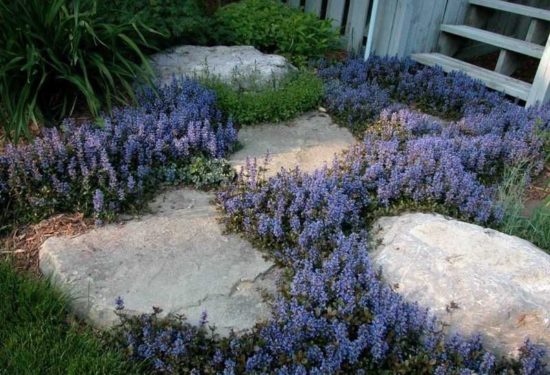
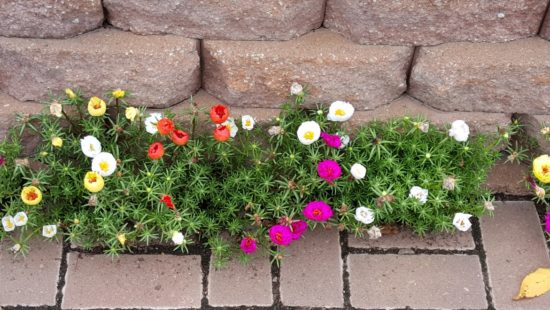

 CUCUMBERS NEVER GET SICK, I'VE BEEN USING ONLY THIS FOR 40 YEARS! I SHARE A SECRET WITH YOU, CUCUMBERS ARE LIKE THE PICTURE!
CUCUMBERS NEVER GET SICK, I'VE BEEN USING ONLY THIS FOR 40 YEARS! I SHARE A SECRET WITH YOU, CUCUMBERS ARE LIKE THE PICTURE! You can dig a bucket of potatoes from each bush. Do you think these are fairy tales? Watch the video
You can dig a bucket of potatoes from each bush. Do you think these are fairy tales? Watch the video
 How our fellow gardeners work in Korea. There is a lot to learn and just fun to watch.
How our fellow gardeners work in Korea. There is a lot to learn and just fun to watch. Eye trainer. The author claims that with daily viewing, vision is restored. They don't charge money for views.
Eye trainer. The author claims that with daily viewing, vision is restored. They don't charge money for views. A 3-ingredient cake recipe in 30 minutes is better than Napoleon. Simple and very tasty.
A 3-ingredient cake recipe in 30 minutes is better than Napoleon. Simple and very tasty. Therapeutic exercises for cervical osteochondrosis. A complete set of exercises.
Therapeutic exercises for cervical osteochondrosis. A complete set of exercises. Which indoor plants match your zodiac sign?
Which indoor plants match your zodiac sign? What about them? Excursion to German dachas.
What about them? Excursion to German dachas.